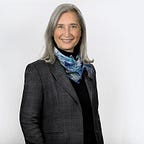A Visit to Washington DC’s New Museum of the Bible
Visitors to the new Museum of the Bible, which opens to the public on November 17, 2017, will enter through the 16-ton, 36-foot high Gutenberg Gates, inspired by the plates that made the Bible the first book produced by printing press. This impressive doorway sets the stage for a vast museum, located in Washington D.C. just blocks from the US Capitol building and from the nation’s most acclaimed cluster of museums on the National Mall, this one dedicated to just one book. “We want this to be the most incredible museum in the world,” said executive director Tony Zeiss. “Our goal is when people leave here they say, ‘Wow!’ and then maybe they will want to engage with the Bible.”
That book, of course, has been the most influential and controversial written work in human history, and that means that the people behind this museum have been very, very, careful to themselves stay as far as possible from controversy. That is an especially tough challenge because the museum was the idea of Hobby Lobby CEO Steve Green, who serves as its board chairman and whose $800 million collection of artifacts serves as the basis for the displays, except for those that had to be returned because they were acquired in violation of international law governing antiquities. He is an outspoken evangelical who successfully challenged the Obamacare mandate on contraception coverage at the Supreme Court. He said his company should not have to pay for employees’ birth control, no matter what their religious beliefs were, because he had decided (after formerly funding it) that birth control violated his religious beliefs. And he has supported a Bible curriculum for public schools and urged more blurring of the line between church and state.
Green’s appearance at a press briefing on November 14 was more like a “Shark Tank” pitch than a revival meeting, however. He said the decision to locate the museum in Washington was based on his marketing-savvy assessment of where it was likely to have the highest attendance, given the city’s strong tourism numbers and results of an extensive survey. The collection of antiquities is surrounded by blinking, talking, push-here, win-this multimedia and interactive exhibits to entice digital natives with nano-second attention spans. The Sistine Chapel had Michelangelo to paint the mural on its ceiling. The first floor ceiling of the Museum of the Bible is covered with images glowing with LED lights.
Vice President Steven Bickley emphasized the museum’s non-sectarian commitment. “We recognize that multiple faiths call this book their own.” The focus of the exhibits and programs is on the Bible’s history, narrative, and impact for many religions, not whether it is to be taken literally or which translation is superior. Among the scholars working with the museum is Eliezer Adam, a Jewish sofer (torah scribe), who will spend a year creating a new torah, one letter at a time. The collection includes a Bible brought to America on the Mayflower, the Women’s Bible assembled by feminist Elizabeth Cady Stanton, and a Bible owned by Elvis Presley.
A room geared toward children is called Courageous Pages, with arcade-style interactive exhibits about child-friendly Bible stories. Children will also enjoy walking through the re-created World of Jesus of Nazareth, with staff in period clothing providing information. Short films introduce the Old and New Testaments, two of 20 theaters within the exhibit space. Visitors will be able to observe scholars translating works and they will be able to see full-scale theatrical productions, beginning with the Broadway musical Amazing Grace. And of course there is a gift shop and a place to eat called Manna, with a Biblically-inspired menu. An especially intriguing exhibit explores the influence of the Bible in every element of life, from the names we give our children to the songs we sing (”Go Tell it On the Mountain,” ‘Wayfaring Stranger,” “I Shall Not Be Moved”) and to the rhetoric of our leaders (Lincoln’s “a House divided among itself cannot stand”). We see Ben Franklin debate Samuel Seabury on American Independence, and arguments for and against slavery, both sides citing Biblical texts. One of the museum’s highlights is a breathtaking “Flyboard ride” through Washington DC highlighting quotations from the Bible inscribed throughout the city.
The museum is beautiful, moving, and accessible, and informative. But there is a curious disconnect between the intensity of focus on a core text of major world religions and the subdued, even bland presentation designed not to offend any of those visitors who have made the Bible “their own” and feel very strongly that their version/interpretation is the right one. The museum acknowledges some of these disputes in a frank but low-key way with exhibits that include the Scopes trial over the teaching of evolution in science class, historical burnings of Biblical texts, and a discussion of the battle over which version of the Bible to use in public schools that led Catholic families to leave and form their own.
The founder may aspire to encourage more people to read the Bible, but this museum is unlikely to convert anyone. It is literally preaching to the choir. Importantly, though, in the exhibit on the role of the Bible in the founding of America, the museum reminds us that our government guarantees us the freedom to follow the Bible or not. Either way, this museum will illuminate what that means and how we decide.
NOTE TO VISITORS: Admission is free, but the museum recommends getting tickets before arrival and donations are welcome.
Originally published at www.huffingtonpost.com on November 17, 2017.
